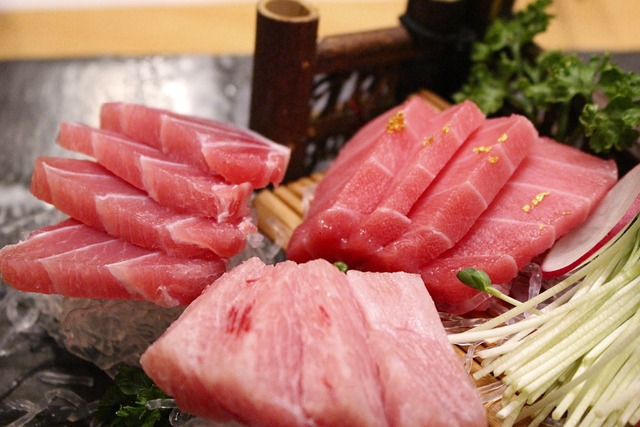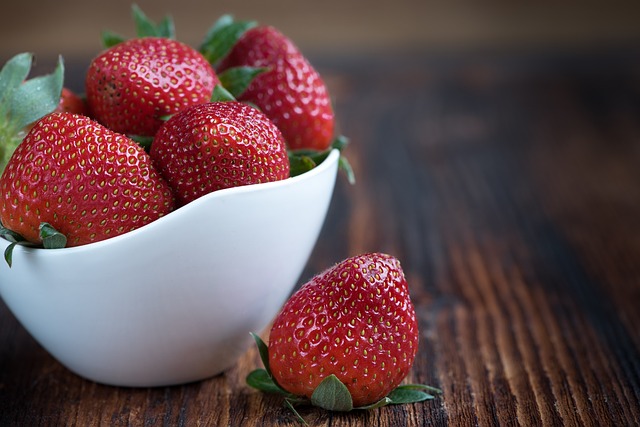Why Do Things Have Different Ways of Counting in Japanese?
Words that express numbers, like "ほん(hon)" and "まい(mai)," are called counting words or classifiers in Japanese.
The choice of counting word depends on what you're counting, and using these counting words can convey information about the item's shape or characteristics.
For example, saying "一枚(ichi-mai)取ってくれる?(Would you pass me one of those?)" indicates you're referring to something flat, like paper or cards.
Why are there so many different counting words in Japanese?
Let's look into the history and different types of classifiers!

目次/Contents
- 1 Counting Words were Used for Practical Way in Edo Period.
- 2 Butterflies are Sometimes Counted as "いっとう" (ittou(頭) - Head)
- 3 Mermaids and Demons – All Counted as Animal or People?
- 4 Counting Tunas – Multiple Counting Methods
- 5 Other Examples
- 5.1 Rabbits: "いちわ (ichiwa - a bird)" or "いっぴき(ippiki - a animal)"?
- 5.2 Modes of Transportation: Different Counting Words
- 5.3 Squid and Crabs: Counting in the Sea and on the Plate
- 5.4 Flowers and Plants: Various Counting Methods
- 5.5 Fruits: Bunches and Individual Pieces
- 5.6 Furniture: Desks, Beds, and Sofas
- 5.7 Letters and Notes: A Variety of Counting Words
- 6 In Conclusion...
Counting Words were Used for Practical Way in Edo Period.
Counting words have been a part of the Japanese language since the Nara period, but the practice of using them extensively for various items became more common during the Edo period.
The various counting methods served to make record-keeping and transactions more convenient.
For instance, if a shop sold 10 fish, recording it as "10匹 (juppiki)" indicated live fish, while "10び (ju-bi)" suggested processed fish, such as filleted or opened fish.
This made it convenient because it eliminated the need to specify the type of fish.
Counting words can vary depending on the time and place they are used, as well as how the speaker perceives the items being counted.
While some traditional counting methods persist, there's no single "correct" way to count.
It's fun to explore the different counting methods that exist!
Butterflies are Sometimes Counted as "いっとう" (ittou(頭) - Head)
Butterflies are sometimes counted as "いっとう(ittou(一頭) - head)" in addition to other methods like "いっぴき(ippiki(一匹) - animal).
This variation is thought to be influenced by English, where counting heads of cattle is known as "head."
This practice carried over to counting large animals like elephants and giraffes found in zoos.
Unusual species of butterflies also began to be counted as "いっとう(ittou(一頭) - head)," possibly inspired by the habit of counting them in research papers as "heads" and then translating it to Japanese as "とう (tou(頭) - head)."
Today, common butterflies in the wild are typically counted as "いっぴき(ippiki(一匹) - animal))", but rare species might still be counted as "いっとう(ittou(一頭) - head)."

Mermaids and Demons – All Counted as Animal or People?
While humans are counted as "ひとり" (hitori (一人)- one person), mermaids, who possess both human and fish traits, are counted as "ひとり (hitori (一人)- one person)" if they exhibit human-like behavior.
Similarly, in folktales, Oni (demons) can be counted as "いっぴき(ippiki(一匹) - animal)" when causing trouble, but when they change their ways and befriend humans, they may be counted as "ひとり" (hitori (一人)- one person)."
Angels are often counted as "ひとり" (hitori (一人)- one person)," while demons are counted as "いっぴき(ippiki(一匹) - animal)" in many cases, following the same reasoning.
In video games, monsters to defeat may be counted as "いっぴき(ippiki(一匹) - animal)" or "いったい" (ittai(一体) - unit), while avatars nurtured as heroes are often counted as "ひとり (hitori (一人)- one person)."
Counting Tunas – Multiple Counting Methods
Tuna, a popular fish used in sushi and sashimi, is counted in various ways before it reaches the dinner table:
- In the sea: "いっぴき" (ippiki(一匹) - an animal).
- When caught and displayed at the market: "いっぽん" (ippon(一本) - a unit).
- After filleting, with the head and backbone removed: "いっちょう" (icchou(一丁)- a unit).
- Sliced into four pieces: "ひとふし" (hitofusi(一節) - a unit).
- Divided into blocks: "ひところ" (hitokoro(一塊) - a unit).
- Sliced into thin strips: "ひとさく" (hitosaku(一柵) - a unit).
- Sold in supermarkets: "ひとぱっく" (hitopakku(一パック) - a pack).
- Presented as sashimi: "ひときれ" (hitokire(一切れ) - a slice).
- Used in sushi: "いっかん" (ikkann(一貫) - sushi portion).
Counting tuna in this way demonstrates how the form and nature of an object influence the choice of counting method.

Other Examples
Rabbits: "いちわ (ichiwa - a bird)" or "いっぴき(ippiki - a animal)"?
Rabbits are usually counted as "いちわ" (ichiwa(一羽) - a feather) but can also be counted as "いっぴき" (ippiki(一匹) - an animal).
The origin of counting rabbits as"いちわ" (ichiwa(一羽) has various explanations, such as during the Edo period when eating animals with four legs was prohibited, some monks considered the two-legged rabbit as a "bird" (とり(鳥)) and ate it.
Another explanation is that their long ears resembled feathers.
Modes of Transportation: Different Counting Words
There are different counting words for various modes of transportation:
- Flying vehicles: "き(ki 機)."
- Road vehicles: "だい(dai 台)."
- Trains running on tracks: "りょう(ryou 両)."
- Ships: Depending on their size, "せき(seki 隻)" for large ships, "そう(sou 艘)" for smaller ones.
- Yachts and boats for competitive sailing: "てい(tei 艇)."
- Transportation devices like escalators: "き(ki 基)."


Squid and Crabs: Counting in the Sea and on the Plate
Squid and crabs are typically counted as "いっぴき" (ippiki(一匹) - an animal) while they are living in the sea.
However, when they become a dish on the dining table, they are often counted as "いっぱい" (ippai(一杯) - a cup).
This is believed to originate from the Chinese character "杯(hai)," which is used to represent vessels filled with liquid.
The body of a squid can be seen as a container, hence the use of "杯(hai)" to count them.
Flowers and Plants: Various Counting Methods
For flowers and plants:
- Flowers with rounded petals like roses, resembling wheels, can be counted as "リン(lin(輪) - a wheel)."
- You can also count them as "こ" (ko (個) - an item).
- For cut flowers, "いっぽん" (ippon(一本) - a unit) is common.
- Blossoms like cherry or plum blossoms might be counted as "えだ(eda(枝) - a branch)."
- Plants in the ground are often counted as "ほん((本)hon)" or "かぶ(kabu(株))."
- Potted plants are counted as "はち(hachi(鉢))."
Fruits: Bunches and Individual Pieces
For fruits:
- Grapes, which form clusters, are counted as "ひとふさ" (hitofusa(一房) - a bunch).
- Individual grapes separated from the bunch are counted as "ひとつぶ" (hitotsubu(一粒) - a piece).
- Smaller fruits like strawberries can also be counted as "ひとつぶ" (hitotsubu(一粒)- a piece).

Furniture: Desks, Beds, and Sofas
Furniture like beds is often counted as "いちだい" (ichidai (一台) - a unit), while items with legs, like desks and tables, may be counted as "いっきゃく" (ikkyaku (一脚) - a leg).
Sofas are usually counted as "いちだい" (ichi-dai (一台) - a unit), and benches in parks are counted as "いっき(ikki(一基) - a machine)."
Letters and Notes: A Variety of Counting Words
For letters and notes:
- Letters sent through the mail are counted as "つう" (tsuu(通) - a unit).
- Postcards, letter paper, and memo paper are counted as "まい" (mai(枚) - sheet).
- Sealed envelopes are counted as "ふう" (fuu(封)- unit).
- Especially heartfelt postcards might be counted as "よう" (you(葉) - leaf).
In Conclusion...
These different counting methods reflect the variety in the Japanese language and the cultural context in which they are used.
I know it is very complicated and frustrating especially if you are learning Japanese.
But once you get used to counting words, you are able to imagine the approximate shape or size of the object we are talking about.
Also, it is closely related to the Kanji characters as well.
The more you learn Kanji, the easier it is to learn which counting words you may use for the object.
Anyway, since it is very much difficult for even Japanese, you can ask and research various counting words!
I hope you enjoyed this article!


